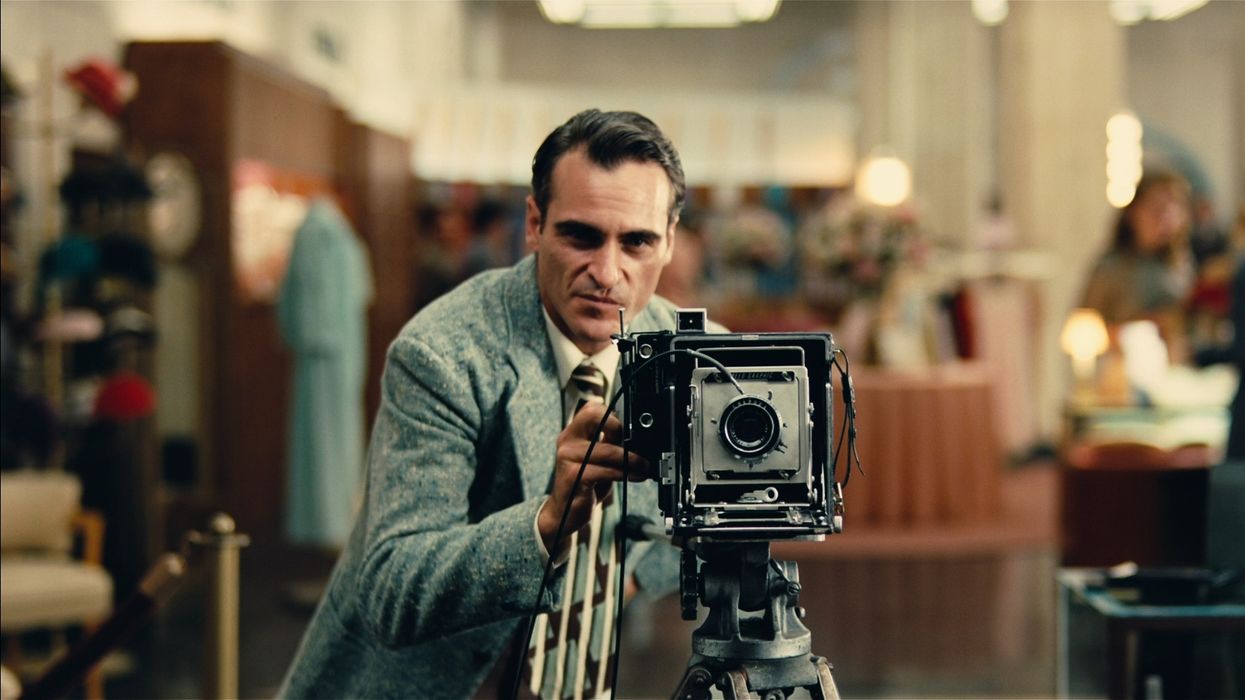Watch: Yes, 'The Master' is a Great Film, and Here's Why
If you're not convinced, this video essay proves PTA's most hypnotic feature is also one of his most criminally underrated.

It is an undeniable fact that within the span of a twenty-year career, Paul Thomas Anderson has put out a pretty incredible canon of work. Which of his films should be considered best, however, is a much more divisive question.
If you went out and surveyed fifty filmmakers, critics, or students and asked them which film sits on top of their list, it's our guess that at some point each of his movies would be represented at number one. All this is to say that, perhaps more than any other modern auteur, the themes of Anderson's movies resonate deeply with audiences for their own entirely personal reasons.
Not content to simply label the film as "bad," some fans have dismissed the film outright with as many synonyms for "dull" as they can muster.
Of course Boogie Nights, There Will Be Blood, and Magnolia are the perennial favorites, but then there are projects like Punch Drunk Love and the subject of Film Radar's latest video essay: The Master. Not content to simply label the film as "bad," some fans have dismissed the film outright with as many synonyms for "dull" as they can muster.
So how is it that they can make it through the kaleidoscopic three hours that comprise Magnolia, but find the story of Freddie Quell so utterly plotless and confounding? The few who have placed the film at the top of their lists—those who truly relate to Freddie's character as a man destined to drift through life without purpose—might tell you, "well, that's kind of the point."
The video essay above may provide those with lesser feelings towards the film with enough context to reconsider its place within PTA's body of work. It is a highly complex character study featuring two of the finest actors of their generation giving brilliantly nuanced performances from an unconventional, yet painstakingly thought-out, script.
Anderson's main inspiration for Freddie is a soldier from a real-life documentary entitled Let There be Light. The film, directed by John Huston, follows 75 U.S. soldiers who have sustained debilitating emotional trauma and depression during World War II. Though initially produced by the United States Government, it was quickly suppressed and remained unreleased for thirty years.
Anderson's version of processing makes for one of the most powerful moments in any of his films.
The scene from the documentary which is highlighted in the essay was lifted almost word for word by Anderson to be re-made in The Master. The main difference is the stubborn nature with which Joaquin Phoenix (inspired in part by stoic monkeys) plays his version of the soldier. This is a key character trait, because later on in the film it is revealed that the only one who can break Freddie's cyclical pattern of hardheaded screw-ups is a chance encounter with the Master himself.
And when that happens, what a scene it is. The Master (Philip Seymour Hoffman) employs a spiritual practice, called "The Cause," which is largely influenced by Scientology's Dianetics; it prompts his protégé Freddie Quell to "process" by revisiting painful experiences, and others to go back before their birth and beyond. Anderson's version of processing makes for one of the most powerful moments in any of his films. Freddie is finally broken down and the sailor who had previously gone wherever the wind takes him has finally found a cause to settle down.
As Anderson himself puts it, however, Quell is ultimately bound to his primal nature. He must leave even that which may be the first place to have provided him with some semblance of solace. "The second he feels too much good will in the room, he’s probably going to split," the director explains.
At its core, that is what the film is all about. If any of us haven't acted this way in some capacity before, then we must at least know someone who is the type to put this burden upon themselves. There is perhaps no more accurate depiction of this frustratingly human psychological phenomenon than Freddie Quell, and we have The Master to thank for that. It shouldn't be taken for granted.











